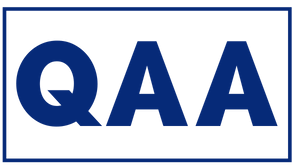
In September, the eLearning Industry released the Top 20 eLearning Statistics for 2019. One of the key take-aways was that an in-depth training program led to a 218% increase in revenue per employee. Stop and think about this for a minute…218% per employee. According to the research, each employee would need to spend approximately 1% or 4.8 minutes each week for organization’s to see this benefit. When weighing the advantages versus disadvantages, an organization who invests in training and engaging employees will reap benefits.
Given the time investment required by employees weekly, what method would be the most effective for organizations? With less than five minutes of training per week required, face-to-face training would not be cost-effective. However, elearning, microlearning, mobile or gamification training could be effective, engaging, relevant and accessible.
Making It Relevant & Accessible
Too much of anything becomes boring…you may love pizza, but if you eat pizza everyday for lunch, you will eventually hate it. The same is true of any training method (i.e., microlearning or gamification) which have been proven effective for learners. In our table, we list a couple of statistics for delivery and training methods.
| ELearning | Mobile | Microlearning | Gamification |
| – Learners engage with 5 times more material per hour – 72% feel that elearning gives a competitive edge | – 67% of organizations use mobile learning | – 17% more effective knowledge transfer – Increases learner engagement by 50% | – 80% of employees enjoy – 87% of employees believe it increases productivity |
Considering the Learners
Our table included delivery methods because elearning and mobile training would be the most effective output for five minutes or less. Depending on the type of learners, these should be considered as options. If the learners are only working in an office environment and will not be completing in any other setting, then perhaps mobile or tablet format is not needed. However, if the learners would be traveling, in a manufacturing, or health environment, a tablet or mobile option could be a relief to some. Those learners who travel may appreciate the ability to complete a 5 minute weekly training while on layovers.
Most learning management systems (LMS) today accommodate training delivery on desktop, tablet or mobile devices. These LMS have become more sophisticated with evolution. For example, data analytics have progressed to a level for more in-depth details on individual and group performances as well as minute details from the lessons. Organizations can be informed of how long a video was watched, how many times an incorrect response was selected or several other items beyond the final score. In addition, AI has become an influence to a few LMS. These are more commonly referred to as Learning Experience Platforms (LXP). With LXP, organizations receive the same convenience of an LMS while learners receive recommendations based on their previous selections.
Final Thoughts…Goals
Every dollar spent on elearning leads to $30 in productivity. As organizations consider updating or developing an in-depth training program, they should think about aligning individual training goals with overall strategic goals. While ‘individual’ does not mean personal for each employee, it does mean goals for each position within the organization. By following this strategy, organizations will ensure employees know and understand their individual path to assist with company growth as well as how to grow themselves within the company.
If you are thinking of updating or creating a training program, take about a minute to watch a demo about our process. Quality Analytics Associates can answer questions and provide a free initial consultation.













